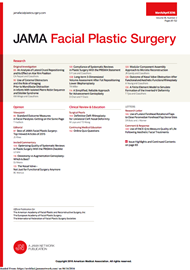Cephalic orientation of the lower lateral cartilages results in tip fullness, a bulbous tip, and alar instability during inspiration. It has an incidence of approximately 68% in primary and 87% in secondary rhinoplasty patients. Paquet et al. performed the first, retrospective clinical study to investigate the efficacy of lateral crural repositioning as an isolated manoeuvre for lowering the alar rim. They reviewed preoperative and postoperative (minimum of six months after surgery) standardised photographs of 54 patients, measuring the change in angle in the segment of the alar rim just lateral to the dome (anterior nostril apex angle). They measured a mean (SD) reduction of the anterior nostril apex angle of 6.8° (P>.001). Repositioning of the lower lateral cartilages results in a statistically significant lowering of the alar rim. Additionally they compared these findings with the impact of additional grafting (e.g. alar rim grafts). Adjunct grafts did not add to a statistically significant reduction of the anterior nostril apex angle.





